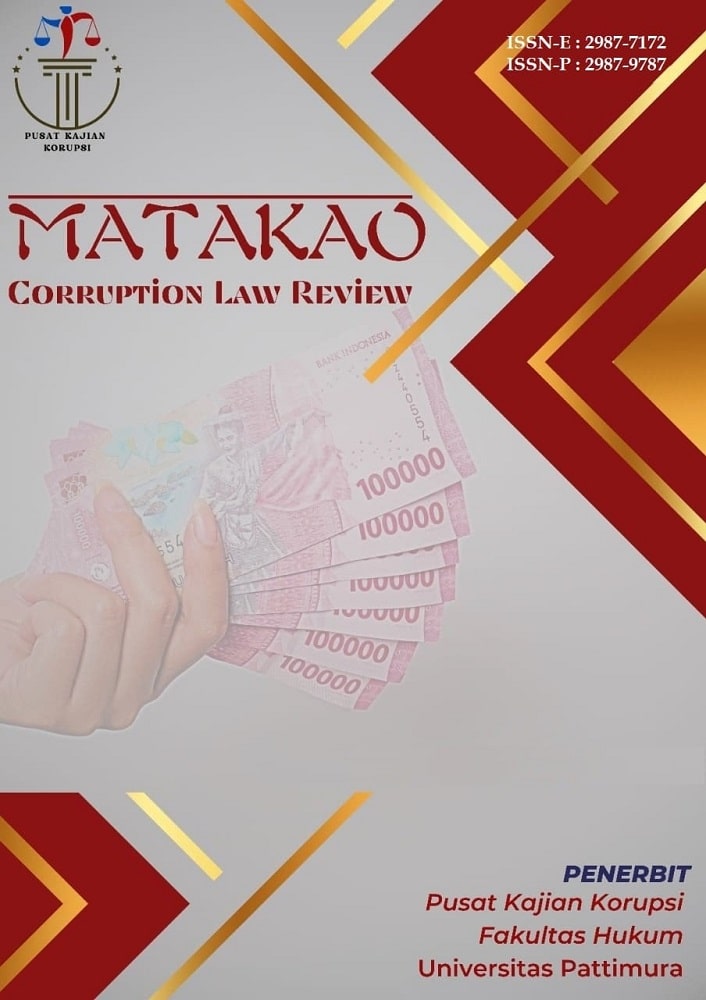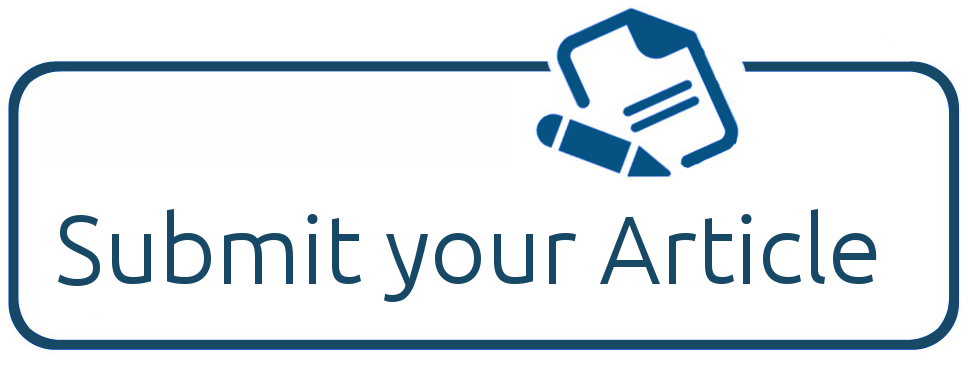Putusan Bebas Tindak Pidana Korupsi: Studi Putusan Pengadilan Negeri Ambon Nomor 12: PID.SUS-TPK/2024/PN.AMB
Abstract
An acquittal (vrijspraak), acquittal, if the defendant's guilt for the act charged to him is not proven legally and convincingly based on the results of the examination in court. Article 183 of the Criminal Procedure Code, A judge may not sentence someone unless he is convinced, with at least two valid pieces of evidence, that the crime actually occurred and the defendant is guilty of committing it. The research method used is the normative legal research type, which is carried out by examining library materials or secondary data, namely examining theories, concepts, legal principles and laws and regulations that are relevant to the problem being studied. The results of the study indicate that the application of material criminal law to corruption cases in the Ambon District Court decision case Number: 12 / Pid.Sus-TPK / 2024 / PN Amb.) was carried out in accordance with the legal facts, both statements from witnesses, statements from the defendant, and evidence. The form of the indictment made by the public prosecutor is appropriate because if the public prosecutor chooses to compile an indictment in the form of a subsidiary, then the systematic arrangement is where the crime threatened with the heaviest principal penalty is placed in the first layer or placed on the primary indictment and the crime threatened with a lighter penalty is placed on the indictment but in terms of proof it can cause difficulties because the proof of the primary indictment can touch the proof of the subsidiary indictment. The Judge's Legal Considerations in handing down the Acquittal was handed down to the Ambon District Court decision Number: 12 / Pid.Sus-TPK / 2024 / PN Amb.) because it was not legally and convincingly proven that the defendant was guilty of committing the corruption crime charged.
Downloads
References
Marwan Effendy. 2010, Pemberantas Korupsi dan Good Governance, Timpani Publishing, Jakarta.
M Kajardi. & RSoesilo, 1988, Kitab Undang-Undang Hukum Acara Pidana Dengan Penjelasan Resmi Dan Komentar. Politeia, Bogor.
Gunarto, Sudrajat, 2018, Dekonstruksi putusan bebas dan putusan lepas dari segala tuntutan, Pustaka Pelajar, Yogyakarta.
Antonius Sudirman, 2007, Hati Nurani Hakim dan Putusannya, Bandung, Citra Aditya Bakti.
Kadir Husin dan Budi Rizki Husein, 2016, Sistem Peradilan Pi dana di Indonesia, Sinar Grafika, Jakarta.
Maria Hatiningsih, 2011, Korupsi yang Memiskinkan, PT Kompas Media Nusantara, Jakarta.
Mahkamah Agung RI, 1994. Yurisprudensi Mahkamah Agung Republik Indonesia, Mahkamah Agung Republik Indonesia, Jakarta.
Jaap Hage, 1997, Reasoning with Rules: An Essay on Legal Reasoning and Its Underlying Logic, Dordrecht, Springer.
Peter Kelly, The Motto of the Flinders Law Students› Associaton - Neminem Oportet Esse Sapientiorem Legibus, Flinders Journalof Law Reform Journal of Law, Vol. 4, 1(1), 1995.
Copyright (c) 2025 Ditha Arizki Salsabilla, Margie Gladies Sopacua, Iqbal Taufik (Author)

This work is licensed under a Creative Commons Attribution-NonCommercial 4.0 International License.
Copyright:
Authors who publish their manuscripts in this Journal agree to the following conditions:
- The copyright in each article belongs to the author, as well as the right to patent.
- Authors are able to enter into separate, additional contractual arrangements for the non-exclusive distribution of the journal's published version of the work (e.g., post it to an institutional repository or publish it in a book), with an acknowledgment of its initial publication in this journal.
- Authors are permitted and encouraged to post their work online (e.g., in institutional repositories or on their website) prior to and during the submission process, as it can lead to productive exchanges, as well as earlier and greater citation of published work.
- Authors have the right to self-archiving of the article (Author Self-Archiving Policy)
Licence : This Journal is disseminated based on the Creative Commons Attribution-NonCommercial 4.0 International license terms. This license allows anyone to copy and redistribute this material in any form or format, compose, modify, and make derivatives of this material for any purpose. You cannot use this material for commercial purposes. You must specify an appropriate name, include a link to the license, and certify that any changes have been made. You can do this in a way that is appropriate, but does not imply that the licensor supports you or your use.

This work is licensed under a Creative Commons Attribution-NonCommercial 4.0 International License..












